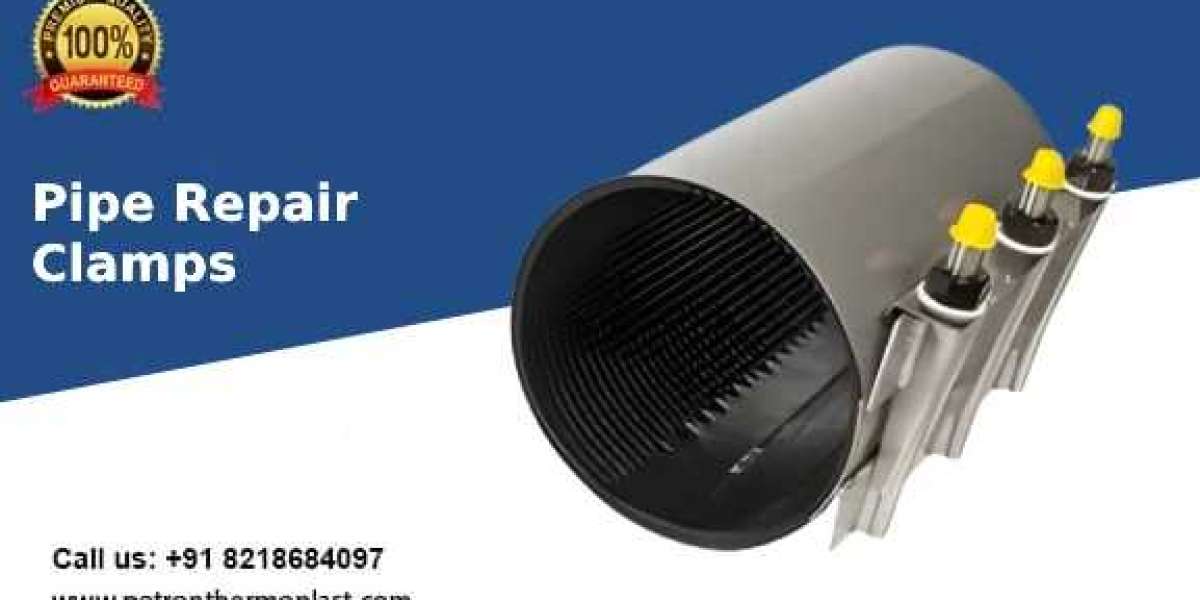In the world of industrial piping systems, maintaining the integrity of pipelines is crucial to ensuring uninterrupted operations. One indispensable tool in this maintenance process is the pipe repair clamp. Known for its effectiveness in quickly and efficiently addressing leaks and other pipe issues, the pipe repair clamp is a go-to solution for many industries. In this blog, we will explore the pipe repair clamp, define its purpose, and delve into its industrial applications, benefits, and safety aspects.
Definition of Pipe Repair Clamp
A pipe repair clamp is a device designed to repair leaks or damage in pipelines without requiring a complete shutdown or replacement of the affected section. It consists of a metal band, usually made of stainless steel or other durable materials, lined with a gasket that seals around the damaged area. The clamp is tightened around the pipe, compressing the gasket and stopping the leak. This quick and efficient solution is ideal for emergency repairs and temporary fixes.
Definition of Repair Clamp
The term repair clamp refers to a general category of clamps used to mend damaged or leaking pipes. While pipe repair clamps are a specific type of repair clamp, others may be used for different purposes or in varying industrial settings. These clamps are typically adjustable and can be secured tightly around a pipe to contain leaks, seal cracks, or provide temporary support until a more permanent solution can be implemented.
Industrial Use Case of Pipe Repair Clamps
Pipe repair clamps are widely used across various industries, including water treatment, chemical processing, oil and gas, and manufacturing. In water treatment plants, for example, these clamps are essential for quickly repairing leaks in large water pipes, preventing water loss and minimizing downtime. In the oil and gas industry, pipe repair clamps are crucial for sealing leaks in pipelines that transport hazardous materials, ensuring environmental safety and operational efficiency.
Chemical processing plants also rely heavily on pipe repair clamps to handle unexpected leaks or damage to pipelines carrying corrosive or volatile substances. The ability to make quick repairs without halting operations is vital in these environments, where even a small leak can lead to significant safety hazards or financial losses.
How Pipe Repair Clamps Improve Efficiency
The primary advantage of pipe repair clamps lies in their ability to provide a fast, effective, and temporary solution to pipeline leaks or damage. By using a pipe repair clamp, companies can avoid the lengthy and costly process of shutting down operations to replace damaged sections of piping. Instead, the clamp can be quickly installed, allowing the system to continue functioning while a more permanent repair is planned.
This efficiency is particularly important in industries where downtime can result in substantial financial losses or safety risks. The use of repair clamps helps minimize these risks by providing a reliable stopgap solution, ensuring that operations can continue with minimal interruption.
Pipe Repair Clamp Industrial Material Safety and Reliability
When it comes to safety and reliability, pipe repair clamps are designed to meet stringent industrial standards. They are typically made from high-quality materials, such as stainless steel, which provides excellent corrosion resistance and durability. The gaskets used in these clamps are often made from rubber or other elastomeric materials that can withstand exposure to various chemicals, temperatures, and pressures.
The reliability of pipe repair clamps is also enhanced by their design, which allows for a secure and tight fit around the pipe, effectively sealing leaks and preventing further damage. This makes them a dependable choice for emergency repairs, ensuring that pipelines can continue to operate safely until permanent repairs can be made.








